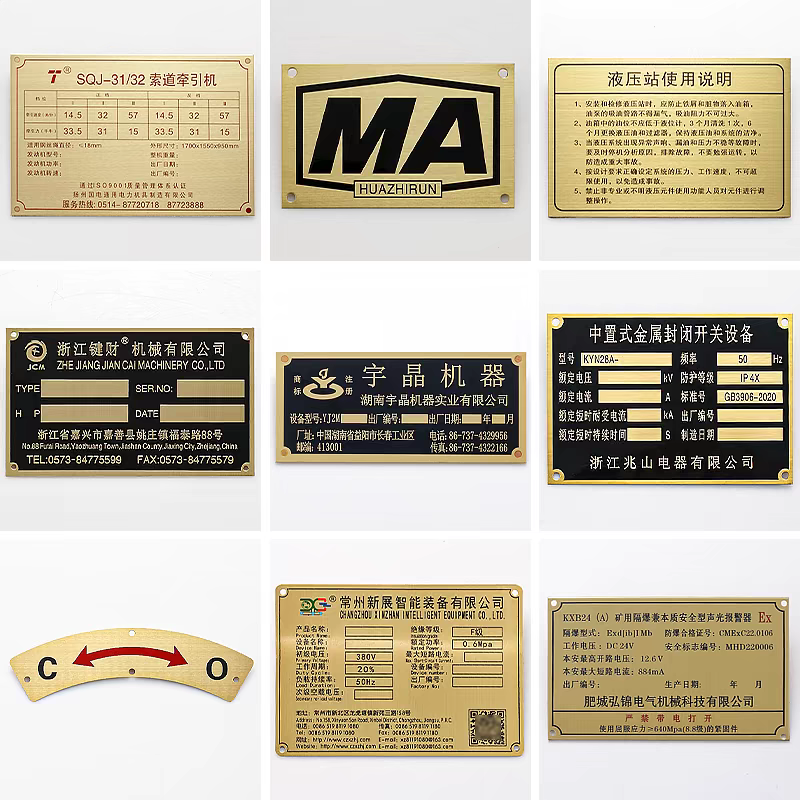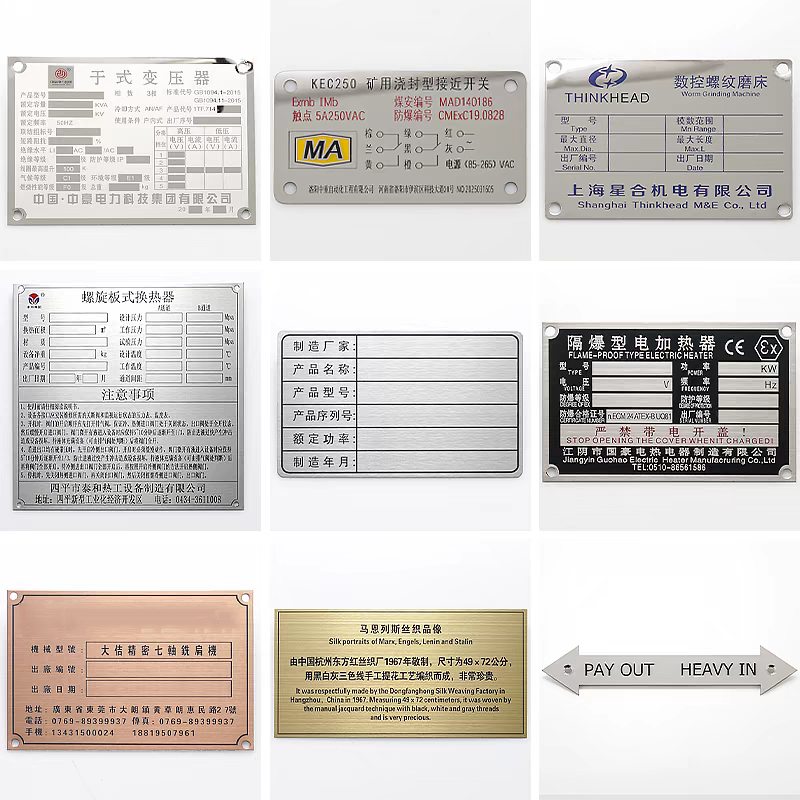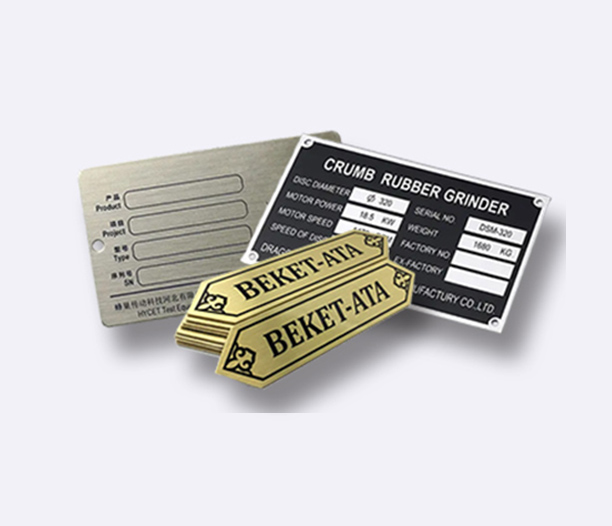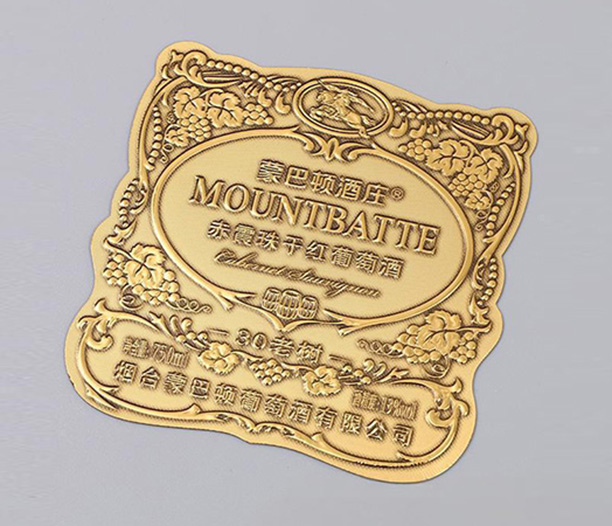In the relentless pursuit of operational efficiency, security, and cost control, effectively managing your company's physical assets – from laptops and tools to heavy machinery and medical devices – is non-negotiable. While various tagging solutions exist, metal asset tags for equipment consistently rise to the top as the superior choice for demanding environments and long-term tracking needs. This comprehensive guide delves into seven crucial aspects that make metal asset tags for equipment an indispensable investment for businesses serious about asset management.

Why Standard Labels Fail and Metal Tags Prevail
Before diving into the specifics of metal tags, it's vital to understand the shortcomings of alternatives like paper or vinyl labels. These flimsy solutions fade under UV light, peel off with moisture or cleaning chemicals, tear easily, and offer minimal security. For critical equipment subjected to harsh conditions, frequent handling, or requiring secure identification, they simply don't last. Metal asset tags for equipment are engineered to overcome these limitations, providing unparalleled durability and functionality.
1. Unmatched Durability & Longevity: Built to Withstand Anything
The primary advantage of metal asset tags for equipment is their exceptional resilience. Crafted from robust materials like anodized aluminum or stainless steel, these tags are designed for the long haul.
Environmental Resistance: They laugh in the face of extreme temperatures (both high and low), relentless UV radiation, moisture, humidity, oils, solvents, and corrosive chemicals. Whether your equipment operates in a freezing warehouse, a scorching factory floor, an outdoor construction site, or a sterile lab, metal tags remain legible and securely attached.
Abrasion and Impact Resistance: Unlike labels that scratch or tear, metal tags resist abrasion from friction, impacts from tools or other equipment, and general rough handling common in industrial or logistical settings. The engraved or etched information remains intact for the asset's entire lifecycle.
Long-Term Legibility: The identification information on metal tags is typically etched, engraved, or stamped directly into the metal substrate or protected under a durable coating (like anodization). This ensures barcodes, serial numbers, and text won't smear, fade, or become unreadable over years, even decades, of use. This permanence is critical for accurate long-term equipment tracking.
2. Superior Tamper-Evidence & Security: Protecting Your Investment
Metal asset tags for equipment are a formidable deterrent against theft and unauthorized removal, offering significant security advantages:
Tamper-Evident Features: Many metal tags are designed with destructible vinyl overlays, special adhesives (like 3M VHB or permanent epoxy), or frangible patterns that visibly shatter or leave clear "VOID" messaging if someone attempts to peel or pry them off. This immediate visual evidence alerts security or management to potential issues.
Physical Removal Difficulty: Removing a securely adhered metal tag requires significant time, effort, and specialized tools, acting as a major deterrent. Thieves are far less likely to target well-marked equipment with obvious, hard-to-remove identification.
Counterfeit Deterrence: The complexity and cost involved in replicating high-quality, custom-etched metal tags make counterfeiting impractical. This ensures the authenticity of your assets and tracking system.
Traceability: Unique serial numbers or asset IDs on each metal tag allow for precise tracking. If equipment is stolen and recovered, the permanent metal tag provides undeniable proof of ownership.
3. Customization Powerhouse: Tailored for Your Exact Needs
Metal asset tags for equipment offer incredible flexibility to meet specific identification and tracking requirements:
Variable Data: Easily incorporate unique information on each tag, such as sequential serial numbers, asset IDs, QR codes, Data Matrix codes, or specific text fields (department, location, PO number).
Barcode & 2D Symbologies: Seamlessly integrate linear barcodes (UPC, Code 128, Code 39) or high-density 2D codes (QR, Data Matrix) for rapid, accurate scanning with mobile computers or fixed scanners, enabling efficient inventory audits and check-in/check-out processes.
Branding & Logos: Permanently etch or emboss your company logo, name, or specific warnings directly onto the tag, reinforcing brand identity and ownership on every piece of equipment.
Size, Shape & Material: Tags can be manufactured in various standard and custom sizes and shapes (rectangles, ovals, circles) from different grades of aluminum or stainless steel to suit the specific asset and available mounting surface.
Surface Finishes: Options like brushed aluminum, colored anodization (red, blue, black, gold, etc.), or polished stainless steel offer both aesthetic appeal and enhanced durability/visibility.

4. Compliance & Standards Adherence: Meeting Rigorous Requirements
Many industries operate under strict regulations mandating durable, permanent asset identification. Metal asset tags for equipment are often the only solution that satisfies these stringent requirements:
Military Specifications (MIL-STD-130): This US Department of Defense standard explicitly requires durable identification plates (often metal) for military property, specifying materials, marking methods, adhesion strength, and environmental resistance. Metal tags are the benchmark for compliance.
FDA & GxP (Pharma/Bio/Medical): Industries requiring meticulous traceability and hygiene often mandate durable, chemical-resistant tags that can withstand repeated sterilization (autoclaving, CIP/SIP processes) without degrading. Stainless steel tags are frequently the go-to solution.
Aerospace & Aviation: FAA regulations and internal quality systems demand permanent, tamper-resistant identification for tools, parts, and ground support equipment crucial for safety and maintenance tracking.
Utilities & Heavy Industry: Safety regulations and asset lifecycle management in harsh environments necessitate identification that won't fail under extreme conditions. Metal tags provide the necessary permanence.
ISO Standards: Various ISO standards related to quality management (ISO 9001) and asset management implicitly or explicitly require reliable asset identification systems, which metal tags support robustly.
5. Streamlined Maintenance & Traceability: The Backbone of Effective Management
Integrating metal asset tags for equipment into your asset management software (CMMS, EAM, or even robust spreadsheets) unlocks powerful operational benefits:
Instant Identification: A quick scan of the barcode or QR code provides immediate access to the asset's complete history: purchase date, cost, warranty information, maintenance schedules, service history, repair logs, assigned user/location, and depreciation status.
Efficient Audits: Physical inventory counts become dramatically faster and more accurate. Staff can scan tags with mobile devices instead of manually recording numbers, minimizing errors and saving significant time.
Preventive Maintenance (PM): Tags enable technicians to quickly pull up maintenance schedules and history directly at the asset location, ensuring timely service and reducing unexpected equipment downtime.
Check-In/Check-Out Tracking: Easily track equipment movement between departments, job sites, or employees, reducing loss and improving accountability.
Lifecycle Management: Reliable data captured via the permanent tag allows for better forecasting of replacement cycles, budgeting for new purchases, and analyzing total cost of ownership (TCO).
6. Cost-Effectiveness & ROI: The Long-Term Value Proposition
While the initial per-unit cost of metal asset tags for equipment is higher than simple labels, their true value lies in their long-term return on investment (ROI):
Reduced Replacement Costs: Metal tags last for the entire usable life of the equipment, often outlasting the asset itself. You eliminate the recurring cost and labor of constantly replacing faded, damaged, or missing paper/plastic labels.
Minimized Loss and Theft: Enhanced security features deter theft and make recovery easier, directly saving replacement costs and preventing operational disruptions.
Improved Operational Efficiency: Faster audits, streamlined maintenance, reduced downtime, and better resource allocation all translate into significant labor savings and productivity gains.
Accurate Depreciation & Financial Reporting: Reliable asset data ensures accurate financial records, tax reporting, and insurance valuations.
Scalability: A robust system built on durable tags scales effortlessly as your business grows and your asset inventory expands.
7. Versatile Application Methods: Secured for Any Surface
Metal asset tags for equipment can be affixed reliably to almost any surface:
Industrial Adhesives: High-performance adhesives (like 3M VHB tapes or epoxy) bond permanently to clean, smooth surfaces (painted metal, plastic, composites). These are the most common application method.
Mechanical Fasteners: Rivets, screws, or bolts provide the absolute most secure attachment for high-vibration environments or assets where adhesive bonding isn't ideal or possible.
Cable Ties: Some tags feature holes for zip ties or metal cable ties, perfect for tagging cables, hoses, or items with limited flat surfaces.
Welding: In extreme cases, tags can even be welded directly onto large metal assets.
Implementing Metal Asset Tags for Equipment: Key Considerations
Material Choice: Aluminum is cost-effective, lightweight, and corrosion-resistant (especially anodized). Stainless steel offers maximum durability, chemical resistance, and high-temperature tolerance.
Marking Method: Chemical etching offers deep, permanent marks. Laser engraving provides high precision and flexibility. Stamping is durable but less detailed. Embossing raises the design for tactile feel.
Data Planning: Carefully plan the information hierarchy (Asset ID, Barcode, Name, Serial #, etc.) and ensure compatibility with your tracking software.
Surface Preparation: For adhesive application, surfaces must be clean, dry, and free of grease, oil, or dust for optimal bonding.
Partner Selection: Work with a reputable tag manufacturer experienced in producing durable metal asset tags for equipment who understands your industry's specific challenges.
In the complex landscape of modern business operations, knowing where your assets are, their condition, and their history is paramount. Metal asset tags for equipment provide the durable, secure, and versatile foundation upon which effective asset management systems are built. Their unparalleled resistance to harsh environments, superior tamper-evidence, extensive customization options, compliance capabilities, and ability to streamline maintenance and traceability deliver tangible, long-term value that far outweighs their initial cost. Investing in high-quality metal asset tags for equipment isn't just about labeling; it's about safeguarding your assets, optimizing operations, ensuring compliance, and ultimately, protecting your bottom line. For any equipment that matters to your business, metal tags are the smart, enduring choice.






